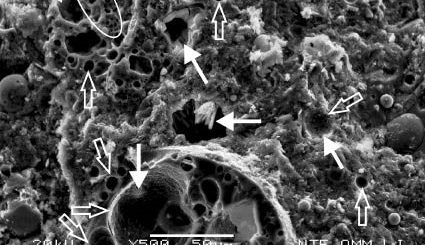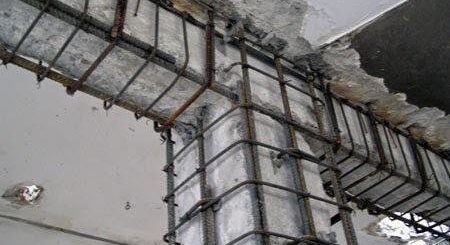Self Compacting Concrete
Self Compacting concrete is a type of concrete that is more flowable than the normal concrete and compacted by itself. Not like normal concrete, vibration is not required to compact it. It flows through the connection areas with reinforcements.
Most of us know what is the self compact concrete means. Further, it is also called as SCC concrete or SCC. Let’s discuss more technical and key factors related to the self-compacting concrete.
Main advantage of Self Compacting Concrete
- Better finishing
- Reduction of the manpower
- Past construction
- Easy for concrete pouring
- Grater strength concrete
- Grater bonding with the reinforcements
- Increase the durability
- Can use to concrete thinner sections
- Cost-efficient production
- Less permeability
- Less possibility of forming voids in an area with reinforcement congestions
- Can be used to concrete irregular structures due to the flowability of concrete
- Pumping of concrete is comparatively easier.
Disadvantages of Self Compacting Concrete
- Increase the cost of formwork as the liquidity of the concrete increases the pressure on the formwork increases.
- Higher attention should be required for the selection of the material for concrete
- The consistency of the selected materials shall be maintained. Variation of the material may affect adversely.
- Better to carry out more trial mixtures to make sure the equality of the concrete and to identify any variations.
- Supervision of work shall be done strictly
With these advantages and disadvantages of left compacting concrete, it is widely and continuously used.
In the following areas of work, self-compacting concrete is used commonly.
- Construction of Piles
- Construction of Raft foundations
- Construct structures with reinforcement congestions
- Drilled shafts
- Column concreting
- Concreting thick layers such as raft in high rise buildings.
- Construction of pile rafts
Production of the left compacting concrete is not new to the construction industry. It was developed long ago and different form of concrete was produced throughout history.
Further, this production is a grater founding to the industry as it added many advantages and have sliven issues in construction related to special work.
Let’s discuss key things that affect the production and construction with this type of concrete.
Factors affecting the Self Compacting Concrete
- Hot weather can affect the perforation of the concrete
- Section of the material should be certain
- Transporting longer distances could affect the flowability of the concrete.
- Further, loss of workability of concrete could lead to reducing the expected performance.
- Higher attention shall be made when admixtures like superplasticizers are sued as they are more sensitive to the changes in condition/source of materials such as fine aggregates and coarse aggregates.
Production of the self-compacting concrete not the same as the normal concrete. There are some limitations and constraints.
Properties and Purpose of additives to Concrete
- Cement
- Fine aggregates
- Coarse aggregates
- Use of mineral admixtures
- Chemical Admixtures
Cement
Ordinary portland cement could be for the production of the self-compacting concrete.
The cement specified in the BS EN 197 could be used as required.
An appropriate stretch class of the cement could also be selected based on the expected stretch of the concrete.
In addition, the article cement and cement additives could be viewed for more information about cement.
Fine Aggregates
As we all know, fine aggrege is used for the concrete mixture.
When we made the self-compacting concrete, the content of the fine aggregate is increasing slightly with the reduction of the content of the coarse aggregates.
- Either rever sand or manufactured sand could be used
- Gradation of the material shall be uninformed
- The moisture content of the aggregate shall be monitored and to be in the alert
- The particle size of less than 0.125mm could be used.
In addition, the consistency of the supply of the materials from the same source selected for trial mixtures shall be maintained.
Coarse Aggregates
Very high attention shall be made on the selection of the coarse aggregate for self-compacting concrete as they made a considerable impact on the workability of the concrete.
- Maximum size of the aggregate is limited to 20mm usually
- When the area to be concrete is congested, the size of the aggregate may be limited to 10-12mm
- Well graded material shall be used
- Rounded aggregate which makes an impact on the workability of concrete could be used
Mineral Admixtures
Following mineral admixtures could be added to the concrete.
- Fly Ash: Improve the quality and the durability of concrete
- Silika Fume: Improves the mechanical properties
- Ground Granulated Blast Furnace Slag (GGBS): Improve the rheological properties
- Stone Powder: Increase the fine content
Chemical Admixture
New generation superplasticizers are added to the concrete to improve the properties of concrete.
There are admixtures that can provide many functions. For example, high range water reducing superplasticizer admixture can uses as a retarder also.
Chemical admixture is used as a water reducer and to have more workable concrete.
Testing of Self Compacting Concrete
There are different tests to make sure the quality of the concrete and the workability of SCC concrete in addition to the strength testes.
- Filling ability test
- Passing ability test
- Segregation resistance test
Under each testing method, there are different test methods available as shown in the following figure. Further, it is a must to carrying out testing of concrete this nature to make sure the quality of the concrete.
| Filling Ability Test | Passing Ability Test | Segregation Resistance Test |
| Slump Floor Test | J-Ring Test | V-funnel at T5 minutes |
| T50cm Slump Flow | L-Box Test | GTM Screen Stability Test |
| V-Funnel Test | U-Box Test | |
| Orimet | Fill-Box Test |



